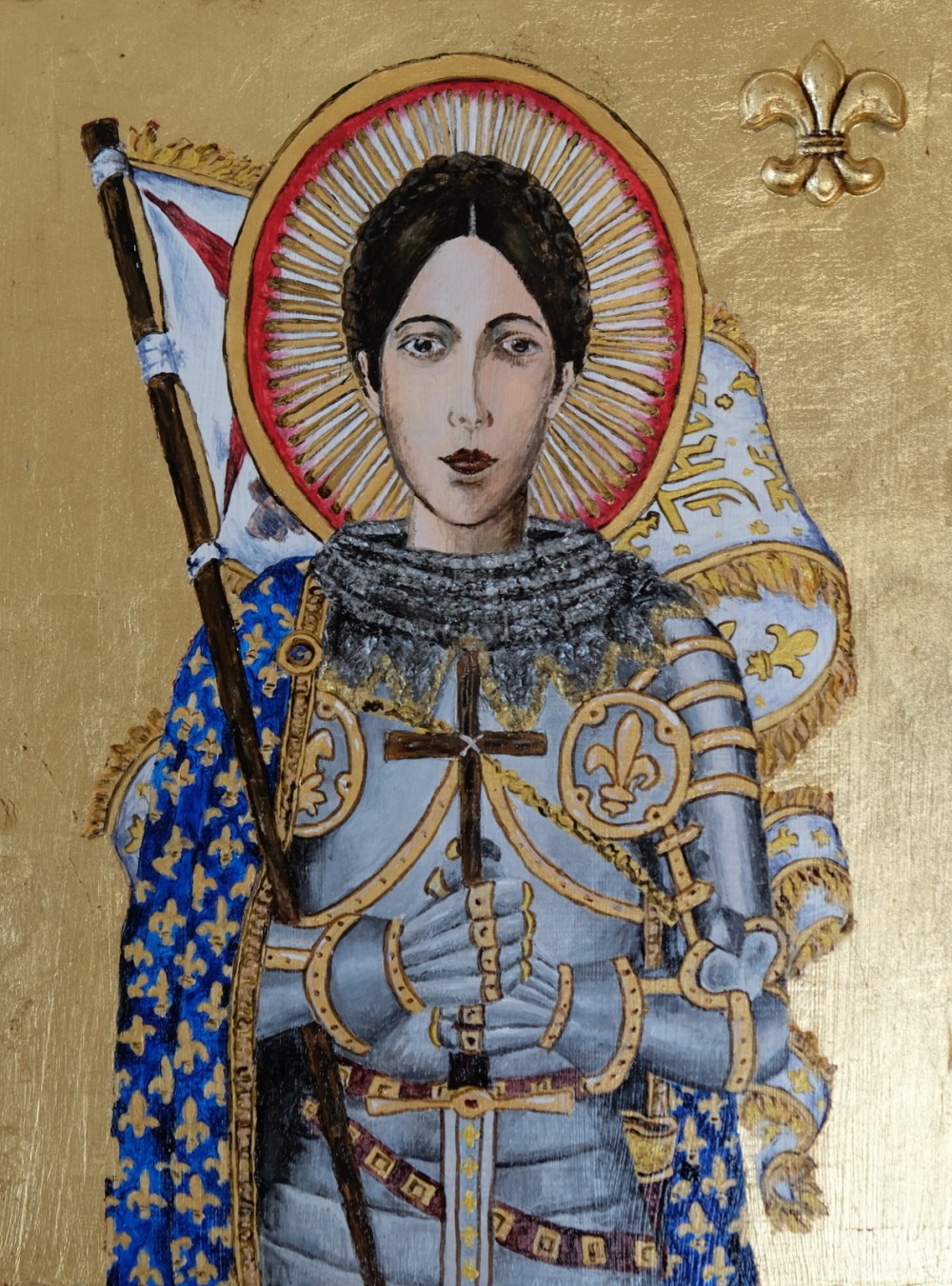
Joan of Arc, a peasant girl living in medieval France, believed that God had chosen her to lead France to victory in its long-running war with England. With no military training, Joan convinced the embattled crown prince Charles of Valois to allow her to lead a French army to the besieged city of Orléans, where it achieved a momentous victory over the English and their French allies, the Burgundians. After seeing the prince crowned King Charles VII, Joan was captured by Anglo-Burgundian forces, tried for witchcraft and heresy and burned at the stake in 1431, at the age of 19. In the trial that followed, Joan was ordered to answer to 70 charges against her, including witchcraft, heresy, and dressing like a man. The Anglo-Burgundians were aiming to get rid of the young leader as well as discredit Charles, who owed his coronation to her. In attempting to distance himself from an accused heretic and witch, the French king made no attempt to negotiate Joan’s release.
In May 1431, after a year in captivity and under threat of death, Joan relented and signed a confession denying that she had ever received divine guidance. Several days later, however, she defied orders by again donning men’s clothes, and authorities pronounced her death sentence. On the morning of May 30, at the age of 19, Joan was taken to the old market place of Rouen and burned at the stake. Her fame only increased after her death, however, and 20 years later a new trial ordered by Charles VII cleared her name. Long before Pope Benedict XV canonized her in 1920, Joan of Arc had attained mythic stature, inspiring numerous works of art and literature over the centuries and becoming the patron saint of France.By the time she was officially canonized in 1920, the Maid of Orléans (as she was known) had long been considered one of history’s greatest saints, and an enduring symbol of French unity and nationalism.

This icon was very complex in relation to the amount of detail involved. The fringe of the banner, all the fleur de lis’s on her robe, and banner, the armour and the chain mail.

I also added a Fleur de lis to the top right hand corner and gilded it, before adding the gold leaf to the icon itself.
Above shows the sequence of the developing icon. Some areas involved so much detail I used a magnifying glass. Working with a magnifying glass takes a little practice. It’s a bit like learning to use multi-focals and you tend to daub blobs of paint it strange angles in strange places. Once your eye adjusts it actually relieves the strain on the eye.

The chain mail was another challenge. These are “modern icons” so their technique and style do not adhere to the strict rules that are required in the painting of icons, which allows the artist a little more freedom in their interpretation. I wanted the chain mail to look like chain mail so I used a heavy textured gel, which I applied with a palette knife. I then took a costume jewelry necklace and printed the chain into the textured gel to give the chain link effect you can see below. I left it to dry for 24 hours, before painting over it in a metallic silver. Once dry I dry brushed the silver with mars black to give the effect of worn, well used chain mail.

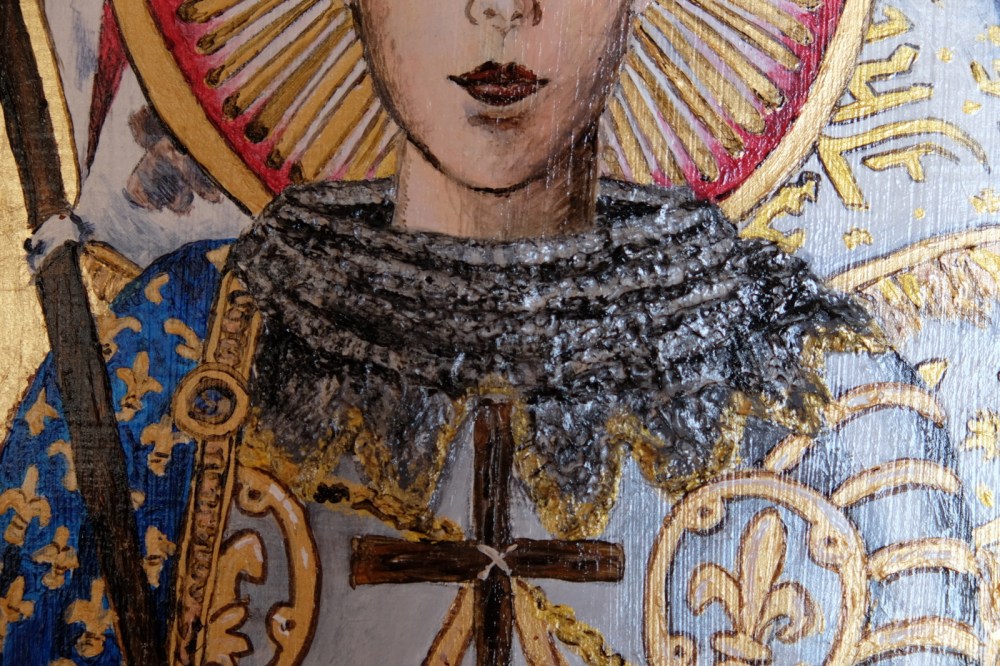

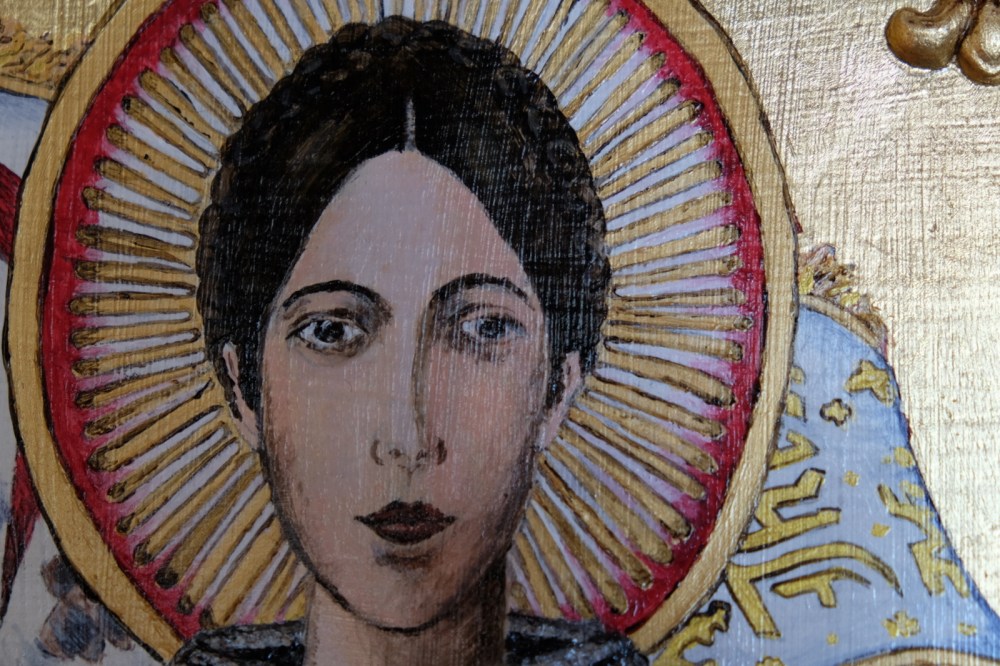
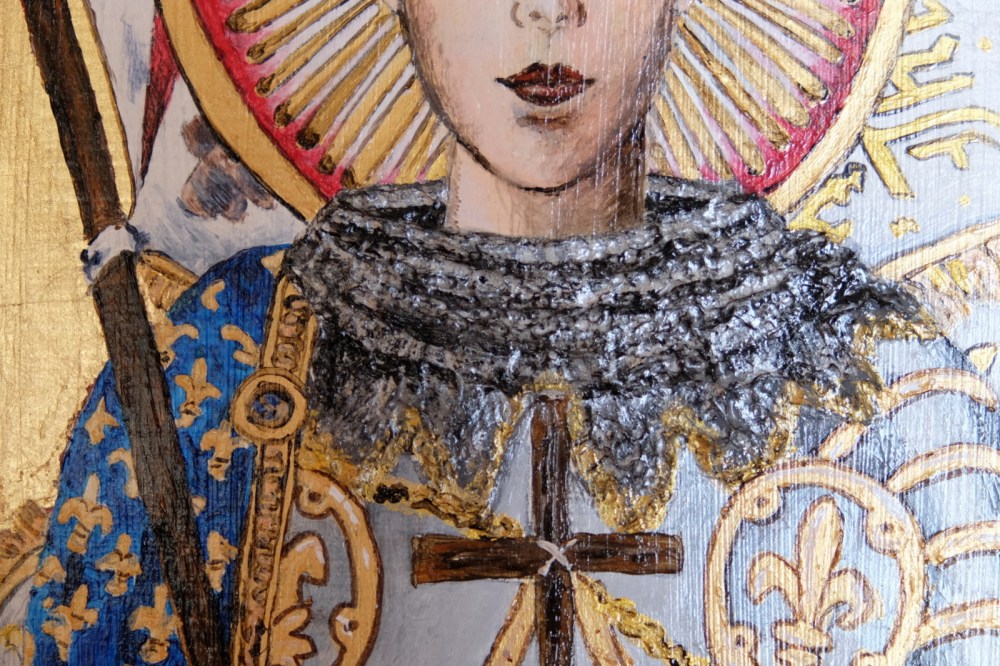
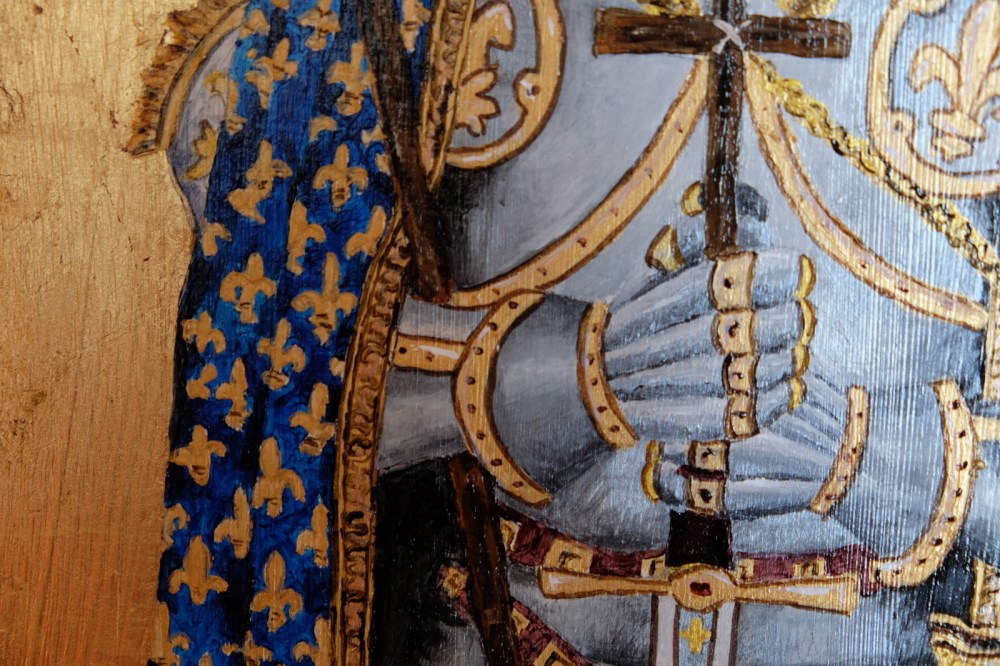















One determined lady